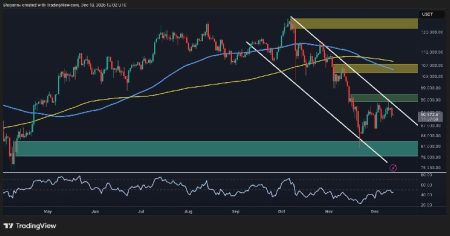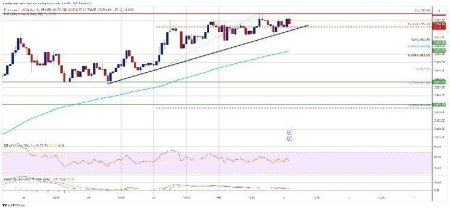Bitcoin Market Faces Turbulence: Short-Term Holders Capitulate as Whales Accumulate
Recent Bitcoin Volatility Creates Market Uncertainty Amid Significant Sell-Off
The cryptocurrency market has entered a period of heightened uncertainty as Bitcoin’s price performance continues to disappoint investors, having declined approximately 15% from its all-time high over the past two weeks. This significant pullback has triggered what appears to be a substantial exodus of short-term investors from the market, according to recent on-chain analysis. However, beneath the surface of this apparent capitulation lies a complex redistribution of digital assets that may signal upcoming market developments that seasoned cryptocurrency observers will find familiar.
On-chain analyst Darkfost highlighted this concerning trend in an October 18 post on the X platform (formerly Twitter), revealing that a significant cohort of Bitcoin’s short-term holders have begun liquidating their positions at a loss. The analysis draws from the Net Realized Profit/Loss metric, a sophisticated on-chain indicator that measures the net amount (in USD) of profits or losses realized by investors when they sell their holdings. This particular metric calculates the daily net profit or loss, presented as a seven-day moving average, offering valuable insights into whether market participants are predominantly selling at a profit or capitulating at a loss during market downturns.
Record-Breaking Daily Losses Point to Significant Investor Capitulation
The magnitude of the current sell-off has reached noteworthy levels, with Darkfost’s analysis indicating that Bitcoin investors are currently realizing losses of approximately $750 million per day. This figure represents one of the highest capitulation rates observed during the current market cycle, comparable to the significant correction witnessed during the summer of 2024. Such extensive loss realization typically indicates a substantial transfer of assets from less conviction-driven investors to those with longer investment horizons and stronger market confidence.
What makes this capitulation phase particularly intriguing for market analysts is its potential to signal an approaching local bottom. Historically, when short-term holders (often characterized as “weak hands” in trading parlance) surrender their holdings to more patient long-term investors (the “diamond hands”), the market frequently experiences a subsequent price recovery. This pattern of redistribution from impatient to patient capital has preceded numerous recoveries throughout Bitcoin’s history, providing a glimmer of optimism for those currently watching the market with concern.
However, Darkfost prudently offered a more cautious perspective, noting that similar capitulation patterns can also manifest during the early stages of a more prolonged bearish market phase. This balanced view acknowledges that while history often rhymes in cryptocurrency markets, each cycle maintains its unique characteristics that can lead to divergent outcomes from historical precedents.
Whale Accumulation Patterns Suggest Strategic Buying During Price Weakness
Providing a counterbalance to the narrative of market exodus, analyst Abramchart published findings on the CryptoQuant platform that revealed substantial Bitcoin accumulation by large-scale investors, commonly referred to as “whales” in the cryptocurrency ecosystem. The analysis specifically references the Inflows To Accumulation Addresses (Dynamic Cohort) metric, which has identified movement of more than 26,500 BTC into wallets associated with long-term holding behavior.
Movements of Bitcoin at this scale typically indicate strategic positioning by institutional investors or wealthy individuals with substantial market knowledge. The transfer of coins from exchange wallets to accumulation addresses generally signals an intention to hold assets for extended periods rather than actively trade them. This behavior represents a significant vote of confidence in Bitcoin’s long-term value proposition, even amid short-term price volatility.
Following established market patterns, such accumulation events have frequently preceded extended bullish phases for Bitcoin. As Abramchart astutely observed in the analysis, this trend suggests that sophisticated market participants are “quietly buying the dip,” accumulating positions at discounted prices while less experienced investors surrender to market fear. This dynamic creates the conditions for a potential transfer of wealth from impatient to patient capital—a phenomenon that has characterized numerous Bitcoin market cycles throughout its history.
Market Implications and Future Outlook for Bitcoin Investors
As of the time of writing, Bitcoin is valued at approximately $106,870, showing minimal price movement over the preceding 24 hours. This price stability following significant downward pressure may indicate that the market is approaching an equilibrium point where selling pressure from short-term holders is being absorbed by the accumulation activity of larger, more strategic investors.
The contrasting behaviors observed between different investor cohorts—capitulation among short-term holders versus accumulation among whales—creates a fascinating market dynamic that often precedes significant price movements. Historical precedent suggests that once the transfer of assets from impatient to patient hands completes, markets frequently experience renewed upward momentum as selling pressure exhausts itself and the supply held by potential sellers diminishes.
For market participants attempting to navigate this period of uncertainty, these on-chain metrics provide valuable context beyond simple price action. The substantial realized losses indicate genuine market pain among a significant portion of investors, while the concurrent accumulation by larger players suggests strong conviction in Bitcoin’s longer-term prospects despite current volatility. This divergence in market behavior highlights the perpetual tension between short-term price movements and longer-term value propositions that defines cryptocurrency markets.
The Broader Significance of Current Market Dynamics
The current market dynamics reflect a fundamental characteristic of the Bitcoin ecosystem: periodic redistributions of assets from speculative holders to conviction-driven investors. These phases of capitulation and accumulation serve as a natural market mechanism that tests investor resolve and ultimately strengthens the distribution of holdings toward those with longer time horizons and deeper market understanding.
For investors with sufficient perspective, the current market phase represents neither reason for panic nor cause for dismissing legitimate concerns. Rather, it exemplifies the ongoing maturation of a still-young asset class that continues to experience significant volatility as it grows in global importance. The substantial capital flows—both into and out of Bitcoin positions—demonstrate the increasing financial significance of the cryptocurrency market despite its continued price discovery process.
As Bitcoin navigates this challenging period below its all-time high, the contrasting on-chain signals provide sophisticated investors with a more nuanced understanding of market dynamics than price action alone could offer. The significant capitulation among short-term holders, juxtaposed against strategic accumulation by whale addresses, creates the conditions for potential price stabilization and eventual recovery once the redistribution of assets completes its course. Whether this pattern will follow historical precedent with a return to bullish momentum, or deviate into a more prolonged corrective phase, remains the central question that will define Bitcoin’s market narrative in the coming weeks and months.
Featured image from iStock, chart data from TradingView















